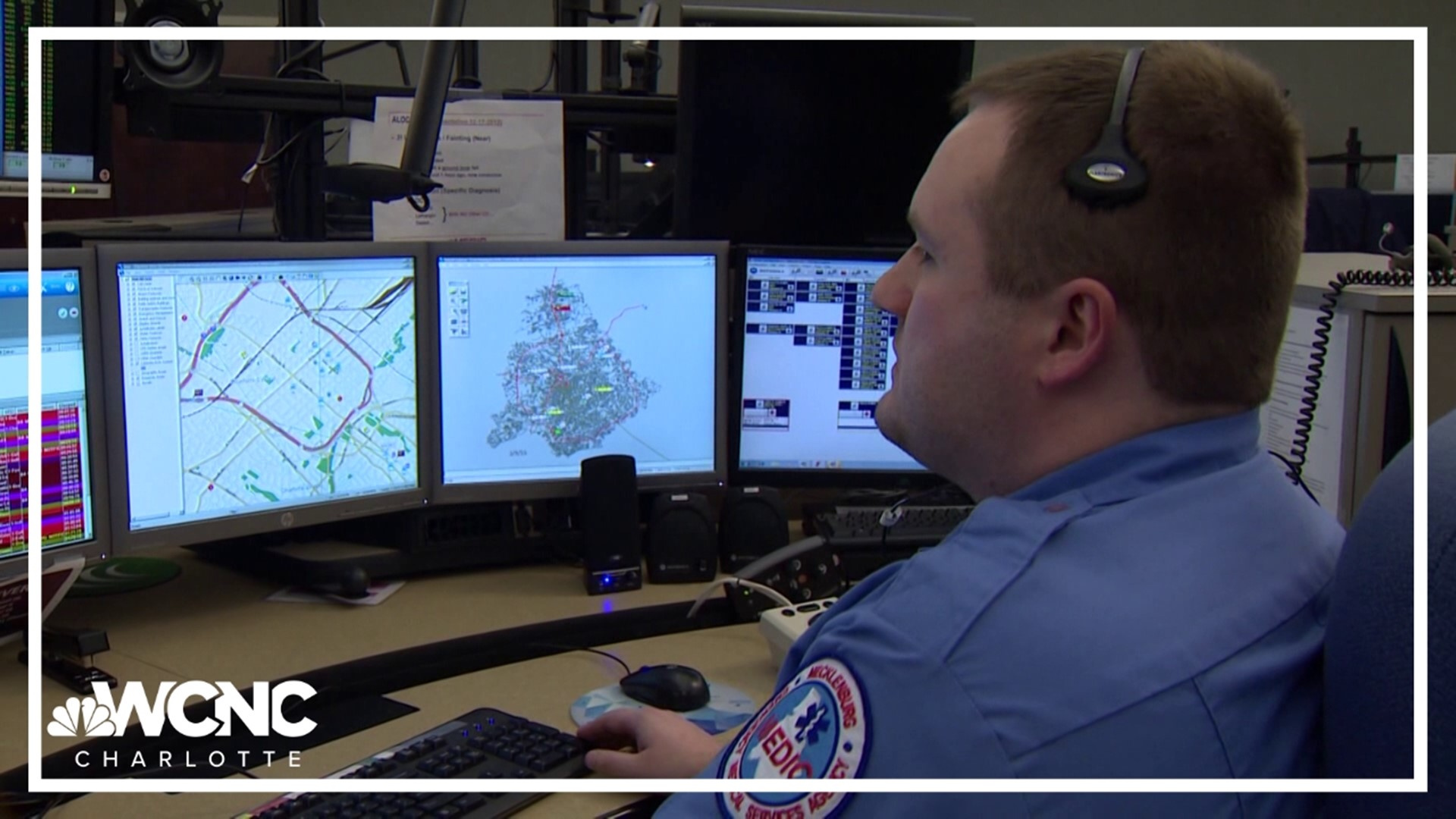MECKLENBURG COUNTY, N.C. — On Tuesday, Medic met with Mecklenburg County commissioners and presented updates to its new response configuration.
In April, the agency changed how it responds to 911 calls to reduce the use of lights and sirens.
The organization has received feedback from their first responders and even had QR codes on ambulances so EMTs and paramedics could complete surveys in real-time to share how the new response configuration is working.
“We want to make sure that we are responding with the right resources, to the right patient, in the right amount of time,” said John Peterson, the Executive Director for Medic.
During the presentation, Medic reported that it responded to 75% of 911 calls with lights and sirens before the response configuration. However, it found that once on scene only about 4% were determined to be life-threatening emergencies.
After the response configuration, Medic responded to 23% of calls with lights and sirens and found that about 5% of calls were determined to be life-threatening emergencies.
The agency says these numbers show medic is using their staff more efficiently.
The agency said that, on top of saving lights and sirens for its sickest patients, it is also saving its paramedics who perform more extensive care than EMTs for those advanced life support calls.
They noted that vacancies for paramedics, who also require more training, are also harder to fill than EMTs.
Medic is now making more use of the basic life support (BLS) team which includes two EMTs in a truck that responds to non-emergency calls.
When someone calls 911 in Mecklenburg County because they need Medic, a dispatcher will walk them through a series of questions to determine the type of emergency they are experiencing.
With the new system, the operator will now provide them with an anticipated arrival time of between 10 and 90 minutes.
The BLS team responded to 194 calls in late 2022. Currently, that number is 756. The average number of weekly responses by a BLS ambulance has increased by 290% and it was made possible because of the new response configuration system.
Another reason for the system change was to reduce crashes.
“Red lights and sirens are some of the most dangerous accidents that happen,” said Medic's Deputy Director of Operations, Jon Strudnek. “Often, they occur at intersections, and most unfortunately, when lights and sirens accidents happen typically the struck vehicle is a passenger car. These passenger cars take greater damage than an ambulance. We don’t want to hurt members of our community.”
Medic said the slowdown creates a safer environment for the public. Following the new system Medic-involved traffic accidents, when using lights and sirens dropped by 78%.
Moreover, Medic said the changes to how it responds are not hurting its ability to serve the community.
“We looked at the outcomes of each of our patients to determine… was there an impact from the response related to that patient,” said Medic Medical Director, Dr. Doug Swanson. “We did not find an outcome to patients, no adverse events related to response time.”
When it comes to recruitment, Medic has increased pay across the board. It also has a new paid EMT training program. Graduates then get a job with the agency. EMTs are offered incentives to become paramedics.
The agency is currently short 46 paramedics and overstaffed for EMTs at this time.
Contact Jesse Pierre at jpierrepet@wcnc.com or follow her on Facebook, X and Instagram.

